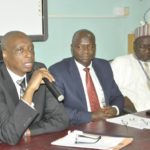
Olumide. O. Ohunayo
The industry went into wild jubilation when the government announced in the last quarter of last year that it had purchased a new set of Instrument Landing System (ILS) CAT 3 to be precise for Lagos and Abuja airports respectively which was installed while the functional CAT 2 ILS in these airports were moved to other airports in the country. The icing on the cake was another announcement that informed of the arrival of a new calibration aircraft for the country to be used in calibrating all critical landing instruments installed in all our airports.
We rejoiced because the CAT 3 is an improved version of CAT 2 system which can enable aircraft land at almost zero visibility while the new aircraft will aid safety by calibrating the necessary instrument in all our airports in a timely and procedural manner as approved by the regulator and manufacturers and most importantly reduce the huge cost of calibration that we usually concession to ASECNA which is sometimes delayed due to unavailability of funds.
Alas our joy was pyrrhic with the embarrassing situation we found ourselves in recently with international flights being cancelled, diverted or returning to base from mid air. These airlines chose Accra as an alternate and not Abuja. At a stage, Accra could not handle the surge anymore then they diverted as far as Dakar in Senegal.
Why Accra and not Abuja? The industry just woke up after 50 years to realise that the alternate airport to Lagos on the chart for foreign carriers is Accra and not Abuja. This has remained unchanged hence the request by Qatar Air to the Ministry to seek approval to land in Abuja. Yet the Ministry gloated on this approval.
The silence from the industry in all of these was disappointing. I can remember NATCA the umbrella body of the air traffic controllers voicing out in the beginning but were countered by NAMA management. Thereafter it was the conspiracy of silence from all industry players. The restive unions that will brutalise concessionaires and airlines owing their organizations went mute, the media did not make it a shouting headline, neither did the agencies or numerous experts and professionals, rather we chose to murmur or use the social media to discuss or defend, heaping all the problems on weather and not on us who allowed the ministry and its agencies to simply herd us into this imbroglio.
Surprisingly foreign airlines that lost a lot of revenue to the diversion estimated at around $6,000,000.00 also failed to speak up and it would appear, they chose the back end communication channel to save aviation officials and not the industry, themselves or their disappointed passengers. The juicy extra frequency, gauge and points of entries cannot be toyed with hence the blank cheque given to passengers to spend and seal lips thereafter. I hope it works…
The passengers who were mainly Nigerians were kept in Accra and Dakar respectively, some were airlifted back to Nigeria, some returned to the country of departure while others found their way by road to Nigeria after being stranded for some days. Some of these passengers fell ill; some were attacked by robbers on arrival in Lagos at the dead of night while another passenger died in the hotel while waiting to board his flight. This is in addition to distortions to flight schedules and missing connecting flights and luggage.
What was the industry’s response to the imbroglio? The ministry of Aviation sent out belated concurrent press releases apologising to passengers, heaping the problem on inclement weather and accusing the foreign airlines of deliberately going to Accra as a choice and not Abuja when the chart given says Accra is the alternate. The ministry of Information simply picked the template of the Ministry of Aviation by changing one or two sentences in words while connoting the same reasons as their counterpart. Cherry picked government officials and other professionals also towed the same line in almost all media outlets.
The inclement weather being parroted now is harmattan haze which can make visibility poor, that is a fact but landing in poor visibility is not usually an issue, if the airport has the right equipment such as the CAT 3 instrument landing systems (ILS), pilots can secure enough assistance to land safely, even when the visibility is next to nothing, simply put, our instrument failed when it was most needed.
It is gratifying to see the Honourable Minister of Aviation accept that some components in the brand new ILS CAT 3 instrument failed hence the problem of inaccurate reading and its inability to function properly after installation, which necessitated the hurried recall of ASECNA which later culminated in the use of the recently purchased calibration aircraft to recalibrate the instrument which happily has been corrected and NOTAM issued.
The solution to putting an end to diversion of aircraft outside Nigeria during inclement weather that often leads to poor visibility is simply making provision for functional CAT – III Instrument Landing System (ILS-CAT III) in all our 4 International Airports, presently located in Lagos, Abuja, P/H and Kano. Anything short of that cannot change the situation whenever we have bad weather.
The chart given to airlines some decades ago with Accra as alternate should be reviewed to Abuja and Port-Harcourt. The poor oversight on our part to rectify the book was very profitable to the Ghanaians while also causing the foreign airlines and passenger losses and pains.
The NCAA should ensure that scheduled and mandatory maintenance and calibrations of the navigational and landing aids in all airports are timely and sustained in line with regulations, considering the last Max Air incident at Minna airport which should have served as a wakeup call. The pilot attributed the incident to the erratic performance of the ILS instrument.
The new calibration aircraft bought for the country should be handed over to NAMA and commercialised to recoup funds expended and should also generate revenue for the country while the ghost of the older aircraft flown by late Capt Agbeyegbe should be properly rested with appropriate documentation stating current situation.
The Ministry should please hands off from procurements of equipments, announcements of projects or managing of the new calibration aircraft. I could hear the murmuring at the chambers when the MD NAMA was asked the cost of CAT3 installion and he simply said it was only the Minister that can answer that question. Rather the Ministry should focus on policy direction, guiding air navigation, air transport, airport development and provision of infrastructure which is clearly stated in the Nigeria Civil Aviation Act of 1964 and 2006 respectively.
We also implore FAAN to urgently fix the runway light on 18L to make it available for night operations while also extending the operating hours of some of our airports. It’s a little wonder that Ilorin Airport which serves as alternate to Lagos shuts down at 1800 hrs while it runs for 24hrs only during Hajj. I align with the proposal for FAAN to handover the runway lighting systems to NAMA let us drop the ego and percevied interest here for Safety and Efficiency.
Finally as we tip-toe towards the formation of a strong airline with the acronym “National Carrier” I can only plead with the government to make it a stratum while the strata should be a comprehensive National Civil Aviation Policy covering connectivity, bilateral, fiscal support, maintenance, infrastructure and guided deregulation buried in effective implementation of economic regulations.
The Federal Government failed and embarrassed Nigerians in cohort with stakeholders not the inclement weather.
Ohunayo is aviation industry stakeholder and member of Aviation Round Table (ART).






